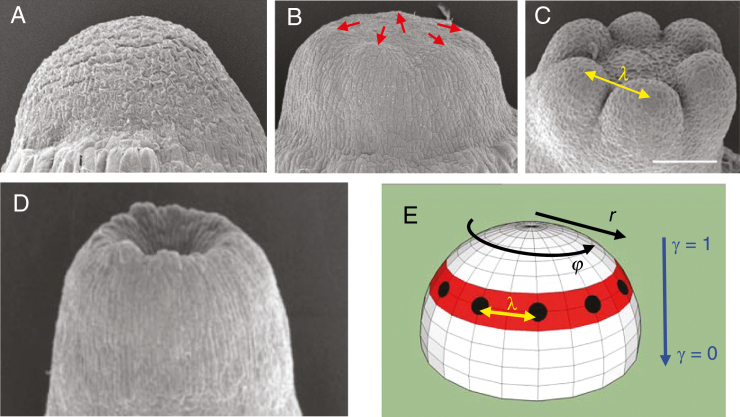Fig. 1.
Cotyledon patterning in conifer development. (A) An early dome-shaped embryo. (B) At a later stage, embryos have flattened and cotyledons are just beginning to appear (red arrows). (C) Cotyledons subsequently grow out, in a whorled (ring) pattern, with a distinct inter-cotyledon spacing, λ. Scale bar = 200 µm. (D) Cup-shaped embryos, with no distinct cotyledons, can occur spontaneously or be induced by NPA treatment (blocking polar auxin transport). This indicates two linked patterning events (E): the first (pattern P1, red) controlling the radius (r coordinate) of the cotyledon ring (or its ‘latitude’ on the dome); the second (pattern P2, black spots) controlling the spacing, λ, between cotyledons in the ring (along φ, the circumferential coordinate, or ‘longitude’ on the dome). P2 patterning is disrupted in cup-shaped embryos. γ denotes the flatness of the embryo (as defined in Nagata et al., 2013: γ = 1, hemisphere; γ = 0, flat disc). A–C and E are adapted from Holloway et al. (2016), D from Harrison and von Aderkas (2004), with permission. (A–D) Larch (Larix) embryos are shown.

